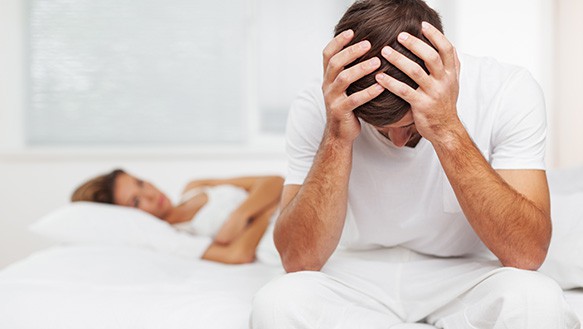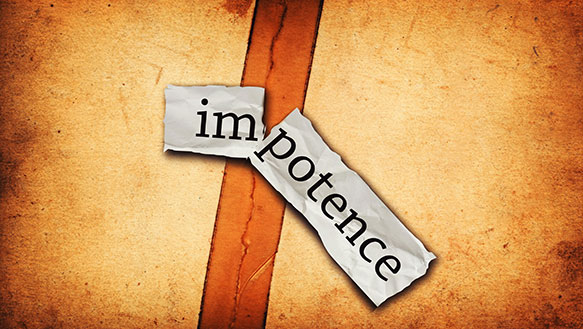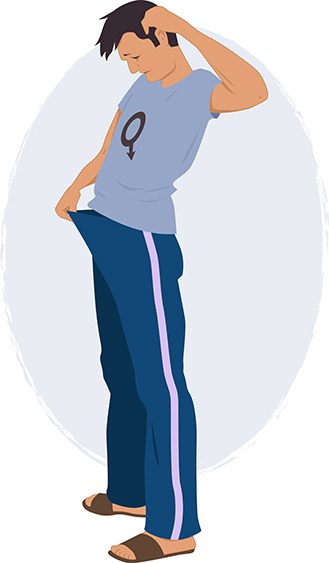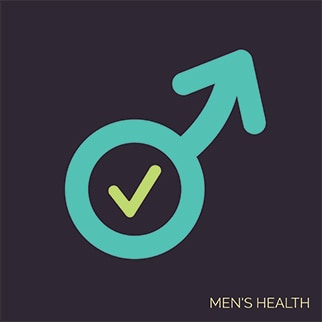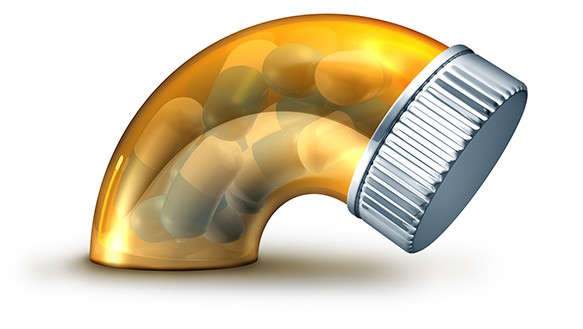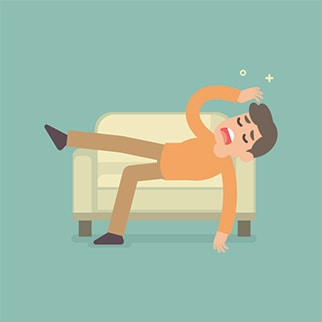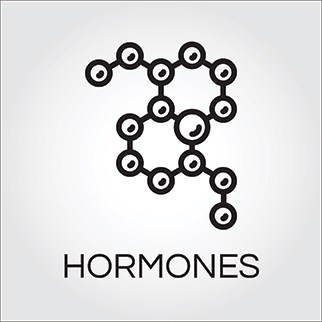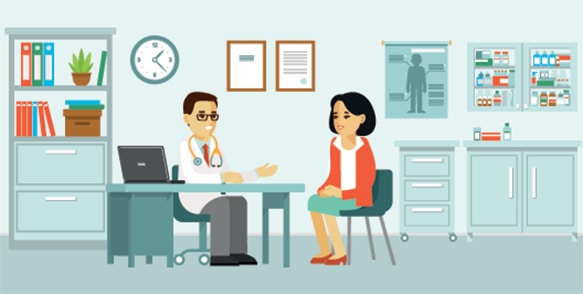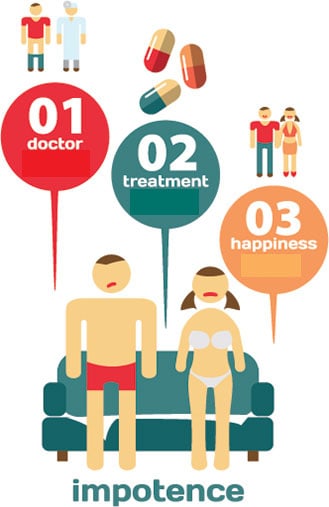Sex is part of life. Yet most people in our society choose to sidestep any issues relating to this topic. One of the biggest concern is sexual dysfunction. It has been reported that 31 percent of males and 43 percent of females in the United States suffer from various degrees of achieving sexual satisfaction. What is even less mentioned is that diabetes plays an active role in this problem for both men and women. Because treatment options are available, it is important to share your concerns with your partner and health care provider. To lessen the stigma concerning this health issue, this article will discuss in detail how diabetes can cause sexual dysfunction and related following topics:
Contents
- Contents
- What is Sexual Dysfunction?
- What Is the Cause of SD?
- Who Is Most Susceptible to Sexual Dysfunction?
- Diabetes and Male SD
- Hyperglycemia and Erectile Dysfunction
- Aging and Diabetes
- Link Between Low Testosterone Level and Diabetes
- Symptoms of Male SD
- Diabetes and Female Sexual Dysfunction
- Diabetes and Hormones
- How to Discuss the Problem with Your Doctor
- Treatments for FSD
- Managing Diabetes and Sexual Dysfunction
- Eat Your Way to Better Sex
Contents
- What is Sexual Dysfunction?
- 4 Types of Disorders
- What Is the Cause of Sexual Dysfunction?
- Physical Causes
- Here is a list of medications that are known to cause SD
- Commonly Abused Substances that can cause SD
- Psychological Causes
- Who Is Most Susceptible to Sexual Dysfunction?
- How Diabetes Can Affect the Sex Drive
- Diabetes and Male SD
- Hyperglycemia and Erectile Dysfunction
- Aging and Diabetes
- Leading Causes of ED
- Link Between Low Testosterone Level and Diabetes
- Symptoms of Male Sexual Dysfunction
- Diabetes and Female Sexual Dysfunction
- Causes of FSD
- Physical Causes
- Psychological Causes
- Blood Glucose and FSD
- Diabetes and Hormones
- Estrogen
- Testosterone
- Progesterone
- Symptoms of FSD
- Diagnosis of Male SD
- Treatment for Male SD
- Diagnosis of FSD
- How to Discuss the Problem with Your Doctor
- Treatments for FSD
- Limitation of Medication and Hormonal Treatments
- Can FSD Be Cured?
- Managing Diabetes and Sexual Dysfunction
- Eat Your Way to Better Sex
What is Sexual Dysfunction?
It is a term given to any problems that inhibit an individual from attaining pleasure during any stage of the sexual response cycle which includes:
Excitement phase. It is sometimes known as the initial desire or arousal stage. This primary stage of the cycle is marked by sexual arousal resulting from various physical and/or psychological stimulation. The most common forms of stimuli are:
- Tactile sensations such as hugging, caressing, petting, kissing, and sometimes tickling
- Visual and sound cues such as viewing erotically arousing pictures, videos, and sound clips.
- Odor cues such a fragrances, incense aroma, and inviting smell according to personal preferences.
- Mental visualization cues such as visual imagery
In this phase, the body will exhibit a rise in breathing and cardiovascular activity. As a result of hormone fluctuation, many people will exhibit the symptoms of sex flush which is marked by reddened skin and warmer body temperature. These are all signs that the body is getting ready for the initial stage of intercourse.
- Plateau phase. During this stage, the heart rate, blood pressure, and muscle tension continue to increase along with heightened stimulation. For males, their urethral sphincters contract to block urine and prevent retrograde ejaculation. For females, their clitorises increases in sensitivity while their Bartholin glands continue to secrete lubrication to keep the vaginal walls from chaffing during the intercourse. For individuals who do not achieve orgasm, the plateau phase is their highest point of sexual excitement.
- Orgasm phase. Orgasm occurs at the end of plateau phase when an individual can achieve enough stimulation to cause a rapid series of involuntary lower pelvic muscle contractions accompanied by a sense of euphoria. During this time, the heart rate is significantly heightened along with risen blood pressure. For some people, orgasm can last for several seconds. For others, it can last as long as fifteen minutes.
- Resolution phase. This stage takes place after an orgasm. It is highlighted by dropping of blood pressure and heart beat, slowing down of breathing, and relaxing of body muscles. For males, they will go through a time interval known as refractory period in which their penises will return to their normal condition and they will not be able to achieve another orgasm or even erection. Although women can also experience refractory period, it is a much rarer occurrence. For most females, they can achieve multiple orgasms within short duration of time after their orgasms. In fact, many individuals have reported of much stronger and lasting orgasms after their initial orgasms.
Even though anyone may experience difficulty in attaining pleasurable sexual performance at some point in their lives, those who exhibit this problem for an extended amount of time can be diagnosed as having SD.
- Desire Disorders – lack of interest in sex or pursue activities related to sex for an extended duration of time. It is sometimes known as low libido.
- Arousal Disorders – inability to become physically aroused during sexual activities even though an individual is emotionally aroused.
- Orgasm Disorders – inability or difficulty in climaxing or achieving orgasm even though an individual is emotionally aroused
- Pain Disorders – experiencing pain during intercourse
What Is the Cause of SD?
When it comes to sexual disorders, there can be many issues that can contribute to the problem. But in general, the underlying cause can be separated into physical causes, psychological causes, and lifestyle choices.
Physical health problems or medication side-effects can be main causes that contribute to intercourse performance problems. The most common medical conditions that are directly related to SD are:
- Diabetes
- Cardiovascular diseases
- Hypertension or hypotension
- Neurological illnesses and damages
- Hormonal imbalance and/or illnesses related to the endocrine system such as hyperthyroidism or hypothyroidism
- Prolonged severe diseases such as liver or kidney failure
- Long history of substance abuse
- Vitamin deficiency
- Pre-menopause and/or Menopause
- Prostate cancer or vaginal cancer
Here is a list of medications that are known to cause SD:
| Type of Medication | Brand Names of The Medication and their Generic Names |
| Hypertension and Diuretic Medication | Hydrochlorothiazide (Esidrix, HydroDIURIL, Hydropres, Inderide, Moduretic, Oretic, Lotensin) Chlorthalidone (Hygroton) Triamterene (Maxide, Dyazide) Furosemide (Lasix) Bumetanide (Bumex) Guanfacine (Tenex) Methyldopa (Aldomet) Clonidine (Catapres) Verapamil (Calan, Isoptin, Verelan) Nifedipine (Adalat, Procardia) Hydralazine (Apresoline) Captopril (Capoten) Enalapril (Vasotec) Metoprolol (Lopressor) Propranolol (Inderal) Labetalol (Normodyne) Atenolol (Tenormin) Phenoxybenzamine (Dibenzyline) Spironolactone (Aldactone) |
| Antidepressents,
Anti-seizure medication, Anti-anxiety medication, Anti-psychotic medications, Anti-mania Medications, Serotonin reuptake inhibitors (SSRIs) |
Fluoxetine (Prozac) Tranylcypromine (Parnate) Sertraline (Zoloft) Isocarboxazid (Marplan) Amitriptyline (Elavil) Amoxipine (Asendin) Clomipramine (Anafranil) Desipramine (Norpramin) Nortriptyline (Pamelor) Phenelzine (Nardil) Buspirone (Buspar) Chlordiazepoxide (Librium) Clorazepate (Tranxene) Diazepam (Valium) Doxepin (Sinequan) Imipramine (Tofranil) Lorazepam (Ativan) Oxazepam (Serax) Phenytoin (Dilantin)Thioridazine (Mellaril) Thiothixene (Navane) Haloperidol (Haldol) Lithium carbonate (Eskalith, Lithobid) |
| Antihistamines,
Decongestants, and Anti-allergy Medications |
Dimehydrinate (Dramamine) Diphenhydramine (Benadryl) Hydroxyzine (Vistaril) Meclizine (Antivert) Promethazine (Phenergan) |
| Histamine Antagonists | Cimetidine (Tagamet) Nizatidine (Axid) Ranitidine (Zantac) |
| Anti-inflammatory Medications Without Steroids | Naproxen (Anaprox, Naprelan, Naprosyn) Indomethacin (Indocin) |
| Parkinson's Disease Medications | Biperiden (Akineton) Benztropine (Cogentin) Trihexyphenidyl (Artane) Procyclidine (Kemadrin) Bromocriptine (Parlodel) Levodopa (Sinemet) |
| Antiarrythmic Medication | Disopyramid (Norpace) |
| Muscle Relaxant Medication | Cyclobenzaprine (Flexeril) Orphenadrine (Norflex) |
| Prostate Cancer Treatments | Flutamide (Eulexin) Leuprolide (Lupron) |
| Chemotherapy Treatments | Busulfan (Myleran) Cyclophosphamide (Cytoxan) |
| Hormone Therapies | Leuprolide (Lupron) Goserelin (Zoladex) |
| Cholesterol-controlling medications | Statins Fibrates |
Commonly Abused Substances that can cause SD:
- Alcohol
- Barbiturates
- Cocaine
- Amphetamines
- Methadone
- Opiates
- Nicotine
- Methadone
- Diazepam
- Ecstasy
- Amyl nitrate
- Morphine
SD can also be caused by depression, bipolar disorder, anxiety disorder, and other psychological disorders. But for the rest of individuals in the society who do not suffer from these debilitating health issues, the main emotional factors that contribute to SD are stress and anxiety. Usually, when people are under a lot of psychological tension, they are much less likely to enjoy sex and more likely to be preoccupied by thoughts concerning their current situations. The most common stress and anxiety issues are:
- Intercourse performance and how their partners think of their attractiveness
- Anxiety over fear of failing to achieve orgasm
- Relationship problems
- Concern about their body images
- Stress from heavy workload
- Anxiety concerning financial burden
- Burden from past bad relationship or abuse experience
Who Is Most Susceptible to Sexual Dysfunction?
It can affect any adults at any age. But according to the statistics, it is more common in individuals over 40 years old because it is directly related to health decline due to aging.
How Diabetes Can Affect the Sex Drive
Sexual performance depends heavily on sufficient blood flow, hormonal fluctuation, and neural signals. Coincidentally, diabetes impairs these functions in the body when the blood glucose level gets out of control. Although high blood glucose level can cause nerve and blood vessel damage to any body regions, clinical study findings indicates the genitals as one of the most frequent areas to suffer from hyperglycemia. This can result in SD in both men and women.
Another problem diabetes poses on sex is desire and arousal challenges. In order to achieve a state of sexual arousal, both men and women require touches to encourage the dilation of the genital blood vessels. Diabetes can disturb this process in two ways:
- by affecting the nervous system required to signal the dilation of these blood vessels,
- by lowering the ability of the circulatory system to provide extra blood for the arousal state
Together, these two problems can make arousal extremely difficult to achieve.
Diabetes and Male SD
When a man becomes sexually excited, hormones and neural activities causes the penile muscles to relax and allow blood pumping through the penile arteries into the two chambers (they are called copora cavernosa). As more blood fills the area, the penis grows rigid. The continuous hormonal change and neuron firing sustain the temporary status to allow for intercourse. Once sex is over and the hormone level returns to normal, the erection diminishes as the muscles begin to contract. This action causes the accumulated blood in the copora cavernosa to release via the penile veins.
Because the circulation and neural system is so delicate in the genitals, any damages and blood clots can be enough to prevent an erection. For example, one of the most common cause of erectile dysfunction is penile arteries being too damaged to open properly and allow blood to flow into the copora cavernosa.
Another common problem for diabetes men is retrograde ejaculation. In this condition, the ejaculation travels back into the bladder instead of being expelled during orgasm. Although it does not affect the climax sensation, it does affect the ability for a man to father a child.
I suggest reading the following articles:
Hyperglycemia and Erectile Dysfunction
Sexual performance problem is a common occurrence in diabetes men. Surveys suggest that as much as 35% to 75% of diabetes men will exhibit various degrees of performance difficulty in their lifetime. However, men with poorly-controlled diabetes tend to have a much higher frequency of suffering from problems than others who stabilized blood glucose level.
Amongst all the causes that contribute to the problem, erectile dysfunction ranks as the top male SD disorder. It has been reported that males with diabetes are more likely to develop erectile dysfunction 10 to 15 years sooner than other who do not suffer from diabetes. It has been estimated that about 37% of type 1 diabetes men will develop the problem in their lifetime. As for type 2 individuals, about 50% will develop the problem within 10 years of their diabetes diagnosis. It has been estimated that 15 million American men suffer from diabetes. If you do the math, that means that about 7.5 million of these individuals will develop impotency at some point in their lives.
Aging and Diabetes
Even more alarming is that diabetes men over 50 can expect 50% to 60% chance of developing erectile dysfunction. The frequency rate significantly increases to 95% for diabetes men over age of 70. Now here is the worst news. Those who suffer from both diabetes and heart diseases can almost guarantee to develop erectile dysfunction. This is because the risk factors for coronary artery disease and erectile dysfunction are the same.
Although there is always are always psychological factors to consider as the underlying origin of ED, the most common reasons are:
- Diabetes
- Hyperlipidemia
- Cardiovascular disease
- Hypertension
- Obesity
- Smoking
- Injuries
- Cancer-related damage and/or surgery side-effect
- Alcohol use
- Atherosclerosis and other blood vessel disorders
- Stroke or nerve damage
- Prescription drugs such as antidepressants and hypertension treatments (please refer to the chart for more information)
Link Between Low Testosterone Level and Diabetes
Besides erectile dysfunction, here are the 3 most common problems: 1) decreased libido, 2) premature ejaculation, and 3) delayed ejaculation. Along with erectile dysfunction, all these problems may have an underlying cause – low testosterone level. What does this have to do with diabetes?
According to clinical cases, reduced insulin sensitivity and insulin resistance are directly associated with low testosterone level. Large volume of consistent case studies have led doctors to even propose using low testosterone level as a diagnosis marker for type 2 diabetes and insulin resistance. From these studies, it seems that low testosterone level affects diabetes and insulin. However, the studies demonstrate a bigger factor that affect all these health problems - body weight.
A 2010 Diabetes Care study actually found that as a male individual’s BMI increases, his testosterone level decreases while his risk of developing diabetes increases. Moreover, as the BMI increases, the frequency of insulin insensitivity and insulin resistance also increase. However, some researchers suggest that malfunctioning of the pituitary gland can actually be the cause of type 2 diabetes, poor weight control, and sexual dysfunction.
Another study (Journal of Clinical Endocrinology & Metabolism, 2004) has found that one-third of their type 2 diabetes male participants have suffered from low testosterone as a result of under-functioning of the pituitary gland in producing luteinizing hormone needed in the secretion of testosterone in the testes. As a result, these individuals also exhibit other health issues such as:
- Loss bone density
- Osteoporosis
- Low red blood cell count
- Low sperm count
- Low muscle mass
- general sense of muscle fatigue
- Poor libido
- Loss of facial and body hair
- Depression, brain fog, and anxiety
Symptoms of Male SD
As noted earlier, it is normal for men to experience performance problems once in a while. However, one should consult a doctor if these symptoms continue for an extended amount of time:
- Lack of interest in sex, sexual fantasies, or contact
- Trouble having an erection
- Trouble maintaining an erection
- Inability to achieve an orgasm
- Inability to control the timing of orgasm and ejaculation resulting in premature ejaculation or early ejaculation
- Inability to ejaculate
- Blood in ejaculation
Under extreme cases where you are having a painful erection lasting for more than two hours, you should contact your doctor immediately or drive to the nearest emergency room for consultation.
Diabetes and Female Sexual Dysfunction
Female sexual dysfunction (also known as FSD) has been used as a blanket term to cover a variety of disorders including lack of sexual desire, inability in getting sexually aroused, difficulty in achieving orgasm, and experiencing painful intercourse. It is often a lesser covered topic because females do not exhibit dramatic symptoms like men and many feel the society pressure to keep quiet about their needs. A research survey study have found that within a group of 150 women with type 2 diabetes:
- 79% of the participants have reported having sex difficulties
- 50% reported having desire problems
- 47% reported having arousal difficulties
- 50% reported having vaginal dryness
- 42% reported having orgasm difficulties
As a result, less is known about the origins of FSD or how to treat it. In general, FSD can be categorized as:
- Hypoactive sexual desire disorder. Defined by a lack of sexual desire, thoughts, and fantasies
- Sexual aversion disorder. Defined by a direct avoidance of sexual contact.
- Sexual arousal disorder. Defined by the inability to keep an adequate about of excitement, lubrication, and swelling for intercourse. Diabetes women are most prone to this problem due to neuropathy and atherosclerosis.
- Orgasmic disorder. Defined by the inability to reach orgasm.
- Sexual pain disorders. Dyspareunia is marked by genital pain during intercourse. Vaginismus is referred to the reoccurring involuntary vaginal muscle spasm that prevents penile penetration.
What is known is that similar to diabetes men, diabetes women have a tendency to suffer from blood vessel damages that affect blood supply to the clitoris and vagina. This can result in lowered arousal sensation and dryness in the genital region. In addition, nerve damage can cause diminish of sensation to complete loss of sensation in the genital area. This problem can make arousal and orgasm extremely challenging or even impossible to accomplish.
One important unique problem for women with FSD is vaginal dryness. In normal situation, the genital region blood vessels dilate to allow clear blood fluid (also known as plasma) to seep through the capillary walls into the vagina and to serve as lubrication. Although it is relatively common in healthy women to experience vaginal dryness, it is prominent in diabetes women because the genital blood vessels have a tendency to be damaged so that it cannot dilate properly to allow enough plasma to diffuse into the vagina. This condition can make sex painful and make it too uncomfortable to become arousing.
When it comes to diabetes females, there are certain aspects that put them at a higher risk of developing FSD:
- Health Issues: Heart Disease, Endometriosis, Cystitis, Multiple Sclerosis, Pelvic Muscle Problems, Chronic Pelvic Pain, Smoking, Alcohol abuse
- Diabetes-related Health Issues: vaginitis resulting from yeast infection, vaginal infection, cystitis resulting from urinary tract infection
- Pain during sex
- Not enough lubrication for intercourse
- Medical or surgery treatment to the genital or pelvic region resulting in blood vessel or nerve damage to the genital area
- Medication side-effects (e.g. depression, pain management, hypertension. Please refer to chart for more information)
- As women grows older and reach menopause, their hormone levels significantly decrease. For more information, please refer to the next section on Diabetes and Hormones.
- Mental burdens such as anxiety, stress, low self-esteem, past abuse
- Psychological mood disorders and medication side-effects
- Relationship problems
- Cultural and religious beliefs
Unlike diabetes men, the association between FSD and hyperglycemia is less apparent. In a large scale survey study, the researchers cannot find a direct correlation between female diabetes individuals and SDs based on these factors:
- Age
- Body weight and BMI
- Duration of diabetes history
- Blood glucose level
What they can find is that women who suffer from more health complications tend to report higher level of FSD symptoms. What is more interesting is that those individuals who suffer from depression in both control group and diabetes group have a much higher tendency to suffer from FSD. As a result, scientists have suggested depression as a predictor for FSD.
Diabetes and Hormones
You cannot talk about sex and not talk about hormones. Unfortunately for females, diabetes also cause a huge problem for the endocrine system. It has been reported that diabetes females have exhibit lower levels of estrogen and testosterone than healthy females. So how does this affect performance?
Estrogen is known as female sex hormone. It is responsible for maintaining the menstrual cycle, maintaining the cell renewal process in female sex organs, and preparing the female body for pregnancy. It also plays a role in female psychological overall well-being. Just by having low estrogen level, it can cause anxiety, general sense of tiredness, sleep apnea, and depression. These can already be enough to disturb an individual from becoming sexually aroused.
It has been observed that as estrogen level increase around ovulation and before menstruation, the women libido tend to be at the highest point. When the estrogen hits the lowest points, the libido tends to be at the lowest point as well. This lower starting point makes diabetes female much more likely to suffer from FSD.
In addition, estrogen promotes the vaginal wall growth and lubrication secretion. Having lower estrogen means that the vagina becomes dry and thinner. This problem makes intercourse an extremely painful experience.
You may wonder why testosterone has any relevance to FSD, but testosterone is actually the precursor hormone of estrogen. In other words, you need testosterone to create estrogen. It has been observed in medical surveys that women who have higher testosterone level tend to exhibit higher sexual desire and engage in more sexual behavior than women who have lower testosterone level. Similar to men, testosterone level significantly drops in individuals with diabetes. This may be another reason why diabetes women have a higher tendency to suffer from FSD.
Progesterone is the precursor hormone for testosterone. Although its main job is to prepare the uterus for pregnancy, it is also responsible for many roles in the female body:
- regulate the menstrual cycle
- protect the body from hypertension and heart disease
- sustain estrogen at balanced level
- control fat burning process
- maintain balanced blood glucose level
- help with repairing damaged nerve fibers
By having low progesterone, women exhibit symptoms of depression, mood swings, anxiety, hot flashes, migraines, and low sex drive. They will also experience abnormal uterine spotting and painful experience during intercourse.
As progesterone plays an active role in regulating fat burning and blood sugar, low level can significantly increase weight gain and other diabetes complications. As mentioned earlier, increasing diabetes symptoms and depression are two leading pointers for FSD.
Individuals with FSD tend to share these top common symptoms:
- Decrease or no sexual desire
- Challenge to become aroused
- Challenge or inability to achieve an orgasm
- Trouble having an orgasm
- Vaginal dryness
- Discomfort and/or pain during intercourse
Similar to any medical diagnosis, your doctor will begin with a physical exam and a thorough assessment questionnaire concerning your symptoms, psychological well-being, relationship status, and stress issues. They will then perform a rectal exam to examine your prostate physical health, and examine your testicles and penis to detect any abnormal signs of underlying issues. Depending on your symptoms, they may request for further examinations or refer you to a specialist for more in-depth investigation of your problems.
For male SD, these are the most common treatments:
- The medication tend to work by increasing influx penile blood flow. The most common ones are tadalafil (also known as Cialis or Adcirca), sildenafil (Viagra, Revatio), avanafil (Stendra), and vardenafil (Levitra). Note that these options may not be viable for all patients. Those who suffer from hypertension, stroke, or cardiovascular diseases are usually discouraged from using this option because they can cause a stroke and create serious interactions with various medications. Other medicals such as apomorphine (Uprima) work by stimulating dopamine to increase desire and sensation. They can help with men who have low sex drive or are less sensitive to arousal as a result of neurological damage.
- Hormone Therapy. Men who suffer from low testosterone level can receive treatment via injections or patches to reverse their physical symptoms.
- Psychological Counselling and Therapy. Depending on the needs, a psychologist can help with previous trauma experience, depression, or anxiety issues. Couple counsellors can help with relationship problems and issues, and encourage communication between partners to encourage better sexual relationship.
- Vacuum-constriction device. This is often referred to as vacuum pump or penis pump. It allows men to draw blood into their penis via a hollow tube to create an erection.
- Vascular Reconstructive Surgery. This is a surgical option to repair and improve the penile blood flow so that the individual can regain the ability to achieve an erection. But due to the cost and procedure difficulty, it is usually not recommended.
- Penile implants. This is usually the last option when medication and vacuum pump both fail to improve the condition. An option of semi-rigid or inflatable implant allows men with severe erectile dysfunction to still have intercourse even when they are unable to achieve an erection by themselves.
In order to properly diagnose the problem, your physician will usually start with a physical and a thorough discussion about your symptoms and concerns such as:
- Your health issues and medical history
- Duration of the problem and details concerning the problem
- Questions concerning you and your partner’s sex health history, and whether either of you have a history of having certain sexually transmitted diseases
- Whether you smoke or drink, the amount, and how often
- The current medications you have been taking
- Whether you suffer from depression or emotional problems
- Whether you have currently having relationship problems
- Whether you are under tremendous amount of stress from work or family
Depending on your symptoms, they may perform a Pap smear test and a pelvic exam to check on the reproductive organs and make sure the cause is not related to cancer, tumor, or other diseases such as sexually transmitted disease, ovarian cyst, bacterial vaginosis, fistulae, or pelvic inflammatory disease. In order to rule out all other possible medical conditions, they may request for blood test and other medical examination procedure to finalize the diagnosis.
How to Discuss the Problem with Your Doctor
Just like each individual’s openness to talk about sex, some doctors are more trained than others in handling health issues concerning sex. Before getting into the detail, ask your doctor if they are comfortable handing your case. If not, you can ask them to refer you to a specialist who have more experience in this matter. And in order to receive the proper diagnosis and treatment, be as specific and straightforward about your problems as possible.
If you have trouble finding the right way to begin the conversation, here are two ways you can try:
- I am unhappy/dissatisfied with my current sex life because __________
- There have been sexual relationship problems with my partner because _______
Treatments for FSD
Based on your attitude towards sex and possible underlying factors whether it is psychological, physical, or hormonal, your physician may suggest certain therapies over others. Here is a list of the most common categories of FSD treatments:
- Sex education. This is always a first step to get the patients more open to the topic and learn more about how they can seek help and resolve the problem.
- Enhance arousal stimulation. It includes any use of erotic materials, new sexual routines, masturbation, and sex toys to increase the sensation and stimulation to create enough arousal for intercourse.
- Distraction techniques. Exercises that helps individuals tune out their negative thoughts so that they can enjoy sex.
- Promotion of non-coital behaviors. Encouraging activities that are physically stimulating such as massages, caressing, and hugging.
- Pain management. Includes treatment for vaginal dryness or sensitivity and teaching of using specific position to minimize pain.
- Psychotherapy and counselling. Talking with professional psychology professionals can help some women resolve their emotional burdens that prevent them from enjoying sex. Some women even found it helpful to involve their sex partner in the counselling sessions.
- Lifestyle changes. This includes better blood glucose level management, stop smoking and alcohol consumption, get more sleep, and engage in more active activities.
- Medical and hormonal treatments. Flibanserin (also known as Addyi) is used to help women with low desire disorder to alleviate the problem and to promote higher sexual desire. Women who suffer from low levels of estrogen, testosterone, or progesterone may benefit immensely with these therapies.
Limitation of Medication and Hormonal Treatments
Please note that not all medication and hormonal treatments for FSD are suitable for all patients. Women who have certain pre-existing health issues such as heart condition, stroke, or prone to blood clots may not be suitable for estrogen treatments as it can significantly increase the chance of complications. Other times, the option may counteract with the current medication and deem unsuitable for the individual.
Further reading:
Most cases of FSD are related to reversible conditions. In these cases, the patients’ willingness can be the main determining factor of the treatment outcome. However, not all cases can be cured. For certain individuals with irreversible conditions, the physical damage can be too severe to repair.
Managing Diabetes and Sexual Dysfunction
When it comes to treating both diabetes and SD, the first step is to consult with a health professional of your challenges. By receiving the proper diagnosis, you and your medical team can create a much more effective treatment suited for your needs. But in general here are some general tips that can greatly improve your life quality and your sex life:
- Quit smoking. It is the number 1 cause of blood vessel damage for both healthy and diabetes individuals. Compounded with diabetes complications, it paves a quick downward spiral of irreparable vessel damage.
- Limit alcohol intake. Although the damage is less significant as smoking, alcohol can spike blood glucose level and create other undesirable health complications.
- Get more sleep. Just by not sleeping enough, you can create an imbalance in your hormonal level and increase insulin insensitivity.
- Participate in more active activities and exercise more often. Exercising can greatly improve blood circulation and decrease the chance of
- Work towards a healthy weight. For both men and women, having a lower BMI can significantly decrease the chances of diabetes complications and improve symptoms of SD.
- Eat healthy food and maintain good blood glucose control. This can greatly decrease chances of yeast infections and keep your body functioning at its optimal state.
- Talk with your partner. Sometimes just by talking with your partner about your challenges can greatly help dissipate the emotional and psychological burden. It can also encourage both parties to be more honest about their needs and willingness to try new things to keep the relationship exciting.
Eat Your Way to Better Sex
If you go through the food history of every culture, you always find stories of people believing certain food can improve sexual performances. Although some are clearly myth (e.g. rhino horn and tiger penis), here is a list of foods that actually have real medicinal properties known to help with SD:
- Watermelon. This fruit actually contain a unique chemical that can open up blood vessels similar to ED medications. On top of that, it contains the antioxidant lycopene that is responsible for maintaining cardiovascular and prostate health.
- Oysters. It has been known for the longest time as an aphrodisiac. Well it may be right. Oysters and other shellfishes are known to have properties that can boost testosterone and elevate sex drive.
- Sea urchins. It is no myth for the Australian aborigines. They swear by this as their ultimate sex drive booster food. Similar to oysters, sea urchins are pack with a unique chemical that greatly improve blood circulation to heighten sexual arousal.
- Caffeine. It is an instant blood flow booster and can greatly help sex drive.
- Dark Chocolate. The unique flavanols nutrient is known to both improve blood flow while alleviate hypertension. In addition, it contains high amount of nitric oxide which is known as an essential chemical required to achieve an erection. No wonder why so many people are addicted to them.
- Concord grape juice and pomegranate juice. Although you should stay with minimal alcohol intake, you can take advantage of these juice containing high amount of nitric oxide. So not only are they great for your heart, they are also awesome for the sex drive.
- Garlic. Although no one like to kiss someone with garlic breath, it has the property of cleaning plaques off the blood vessels to promote better blood flow.
- Fish with high omega-3 fatty acids. Omega-3 fatty acids is another essential mineral needed for the body to create nitric oxide. So not only will it lower your blood pressure and cholesterol, it will improve your sex drive.
- Kale. It is filled with so much nitric oxide that it is an instant sex drive booster. Packed with plant based omega-3s, vitamins, and minerals, no wonder it is so highly sought-after at the food markets.
- Nuts. Many type of nuts contain the amino acid arginine needed for the body to produce nitric oxide in the erection process.
We hope that this article has provided our readers with ample information on diabetes and sexual dysfunction. And we sincerely want our readers to know that it is a health problem just like any other medical needs. Do not suffer in silence. Reach out and seek help if you are not satisfied with your current experience. If you have any personal experiences and challenges you would love to share with us, do not hesitate to drop us a comment. We would love to hear from you.
TheDiabetesCouncil Article | Reviewed by Dr. Christine Traxler MD on June 02, 2020
References
- Salonia, R. Lanzi, M. Scavini et al., “Sexual function and endocrine profile in fertile women with type 1 diabetes,” Diabetes Care, vol. 29, no. 2, pp. 312–316, 2006.
- Bargiota, K. Dimitropoulos, V. Tzortzis, and G. N. Koukoulis, “Sexual dysfunction in diabetic women,” Hormones, vol. 10, no. 3, pp. 196–206, 2011.
- E. Pontiroli, D. Cortelazzi, and A. Morabito, “Female sexual dysfunction and diabetes: a systematic review and meta-analysis,” Journal of Sexual Medicine, vol. 10, no. 4, pp. 1044–1051, 2013.
- American Diabetes Association. Sexual Health Accessed 4/21/2015.
- F. Palmer, “Sexual dysfunction in men and women with chronic kidney disease and end-stage kidney disease,” Advances in Renal Replacement Therapy, vol. 10, no. 1, pp. 48–60, 2003.
- Bal MD, Yılmaz SD, Celik SG, Dinçağ N, Beji NK, Yalçın O. Does the diabetes of type 2 affect the sexual functions of women?. J Sex Marital Ther. 2015;41(1):107-13.
- Both, S. et al. “Sexual Response in Women with Type I Diabetes Mellitus: A Controlled Laboratory Study Measuring Vaginal Blood Flow and Subjective Sexual Arousal,” Archives of Sexual Behavior (2015) 44:1573.
- Caruso, S. et al. “Sildenafil Improves Sexual Functioning in Premenopausal Women with Type 1 Diabetes Who Are Affected by Sexual Arousal Disorder: A Double-Blind Crossover, Placebo-Controlled Pilot Study,” Fertility and Sterility (2006) 85:1496.
- Elyasi, F. et al. “Sexual Dysfunction in Women with Type 2 Diabetes Mellitus,” Iranian Journal of Medical Science (2015) 40:206.
- Elyasi, F., Kashi, Z., Tasfieh, B., Bahar, A., & Khademloo, M. (2015). Sexual Dysfunction in Women with Type 2 Diabetes Mellitus. Iranian Journal of Medical Sciences, 40(3), 206–213.
- Enzlin, Paul, et. Al. Sexual Dysfunction in Women with Type 1 Diabetes. Diabetes Care 2002 Apr; 25(4): 672-677.
- Esposito, K. et al. “Mediterranean Diet Improves Sexual Function in Women with the Metabolic Syndrome,” International Journal of Impotence Research (2007) 19:486.
- O. Finkelstein, S. Shirani, D. Wuerth, and S. H. Finkelstein, “Therapy Insight: sexual dysfunction in patients with chronic kidney disease,” Nature Clinical Practice Nephrology, vol. 3, no. 4, pp. 200–207, 2007.
- Corona, E. Mannucci, R. Mansani et al., “Organic, relational and psychological factors in erectile dysfunction in men with diabetes mellitus,” European Urology, vol. 46, no. 2, pp. 222–228, 2004.
- Grandjean, C. and B. Moran. “The Impact of Diabetes on Female Sexual Well-Being,” Nursing Clinics of North America (2007) 42:581.
- Mazzilli, R. et al. “Sexual Dysfunction in Diabetic Women: Prevalence and Differences in Type 1 and 2 Diabetes Mellitus,” Diabetes, Metabolic Syndrome, and Obesity (2015) 8:97.
- Mazzilli, R., Imbrogno, N., Elia, J., Delfino, M., Bitterman, O., Napoli, A., & Mazzilli, F. (2015). Sexual dysfunction in diabetic women: prevalence and differences in type 1 and type 2 diabetes mellitus. Diabetes, Metabolic Syndrome and Obesity: Targets and Therapy, 8, 97–101.
- Mintz, L.B. “Bibliotherapy for Low Sexual Desire: Evidence for Effectiveness,” Journal of Counseling Psychology (2012) 59:471.
- Vecchio, S. D. Navaneethan, D. W. Johnson et al., “Treatment options for sexual dysfunction in patients with chronic kidney disease: a systematic review of randomized controlled trials,” Clinical Journal of the American Society of Nephrology, vol. 5, no. 6, pp. 985–995, 2010.
- National Diabetes Information Clearinghouse. Sexual and Urologic Problems of Diabetes Accessed 4/21/2015.
- Phillips, Nancy. Female Sexual Dysfunction: Evaluation and Treatment. Am Fam Physician. 2000 Jul 1: 62(1): 127-136.
- Phillips, A. and S. Phillips. “Recognizing Female Sexual Dysfunction as an Essential Aspect of Effective Diabetes Care,” Applied Nursing Research (2015) 28:235.
- Enzlin, R. Rosen, M. Wiegel et al., “Sexual dysfunction in women with type 1 diabetes: long-term findings from the DCCT/ EDIC study cohort,” Diabetes Care, vol. 32, no. 5, pp. 780–785, 2009.
- Pontiroli, A.E. et al. “Female Sexual Dysfunction and Diabetes: A Systematic Review and Meta-Analysis,” Journal of Sexual Medicine (2013) 10:1044.
- Basson, J. Berman, A. Burnett et al., “Report of the international consensus development conference on female sexual dysfunction: definitions and classifications,” Journal of Urology, vol. 163, no. 3, pp. 888–893, 2000.
- Basson, M. E. Wierman, J. van Lankveld, and L. Brotto, “Summary of the recommendations on sexual dysfunctions in women,” Journal of Sexual Medicine, vol. 7, no. 1, part 2, pp. 314–326, 2010.
- Rutte, A. et al. “Prevalence and Correlates of Sexual Dysfunction in Men and Women with Type 2 Diabetes,” Journal of Sex and Marital Therapy (2015) 41:680.
- Rutte, A. et al. “Type 2 Diabetes Patients’ Needs and Preferences for Care Concerning Sexual Problems: A Cross-Sectional Survey and Qualitative Inrterviews,” Journal of Sex and Marital Therapy (2015) 7:1.
- Skeldon, S.C. et al. “Erectile Dysfunction and Undiagnosed Diabetes, Hypertension, and Hypercholesterolemia,” Annals of Family Medicine (2015) 13:331.


